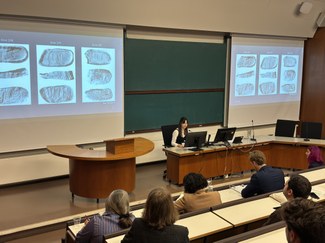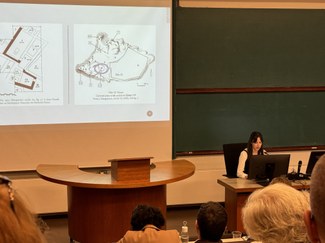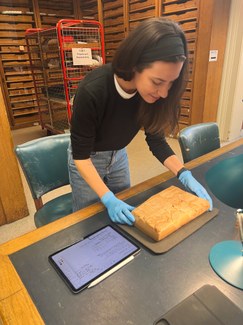Report from our 2024 Judith A. Lerner, Ph.D. Summer Traveler: Samantha Rainford
ISAW is pleased to share the summer travel report from the 2024 Judith A. Lerner, Ph.D. Summer Travel Fund recipient, Samantha Rainford.
I would like to thank Judith Lerner and the Judith Lerner PhD Summer Travel Fund for supporting my travel this summer to present at the 69th Rencontre Assyriologique Internationale, that took place in Helsinki, and to research in the British Museum’s tablet room for my dissertation.
At the Rencontre, I presented a paper titled “Following Footsteps: ‘Feet of Clay’ and the Transmission of Scribal Knowledge at Late Bronze Age Emar” which analyzed the purchase of three young children into slavery during a famine by the city’s diviner. In the transaction, the parents (the sellers) impressed into clay one footprint of each of the three children, which were found accompanying the transaction document. I argued that the diviner, albeit operating in the Late Bronze Age city of Emar, had access to knowledge of the legal phrasebook ana ittišu, of which a Middle Assyrian copy was made during the reign of Ninurta-apil-ekur. Overall, the paper demonstrated how the scholarly networks of erudite individuals, such as diviners, transcend local boundaries to share knowledge that can be implemented into innovative legal practice.
Following the Rencontre, I spent a few days in the British Museum’s tablet room, to look at some materials for current projects, including my dissertation. The main focus of the day was looking at the seals of Aššur that span the top of the Esarhaddon Succession Oath Documents (ESOD). Each seal belongs to the god Aššur, as the caption above them articulates, and the seals date from the Old, Middle, and Neo-Assyrian periods.
I also spent time with two ana ittišu tablets, which relate to the paper I had just presented at the Rencontre and is now in the process of being finished as an article for publication. With these, I focused on the orthography and paleography of the tablets, as well as the paratextual characteristics of the tablets that coincide with the paratextual characteristics of other scribal texts found in Assur. Building from the paper on the clay foot impressions, I also worked with a clay footprint from the Neo-Babylonian period that documents the claiming of a foundling or abandoned child. The child must have been an infant based on the size of the footprint, but this evidence is also going toward expanding the research I presented in the conference into a larger published project.
Once again, I am immensely grateful for the support of Judith Lerner and her Summer Travel Fund, and have enjoyed sharing my finds with her and my colleagues (and look forward to sharing them with the field upon publication).
 Presenting at the 69th Rencontre Assyriologique Internationale in Helsinki.
Presenting at the 69th Rencontre Assyriologique Internationale in Helsinki.
 Presenting at the 69th Rencontre Assyriologique Internationale in Helsinki.
Presenting at the 69th Rencontre Assyriologique Internationale in Helsinki.
 The seals of Aššur from the Esarhaddon Succession Oath Documents in the British Museum tablet room.
The seals of Aššur from the Esarhaddon Succession Oath Documents in the British Museum tablet room.